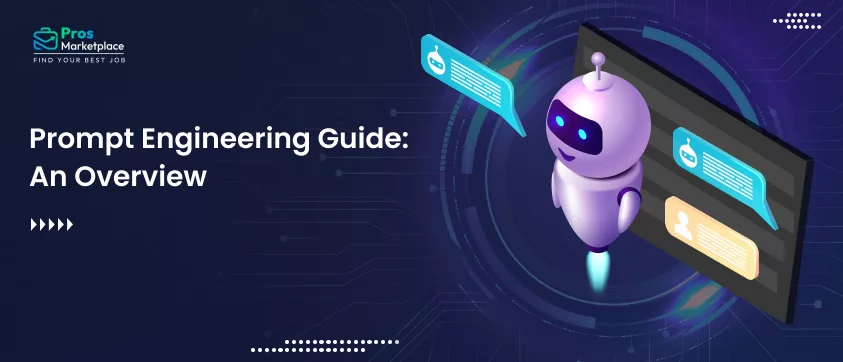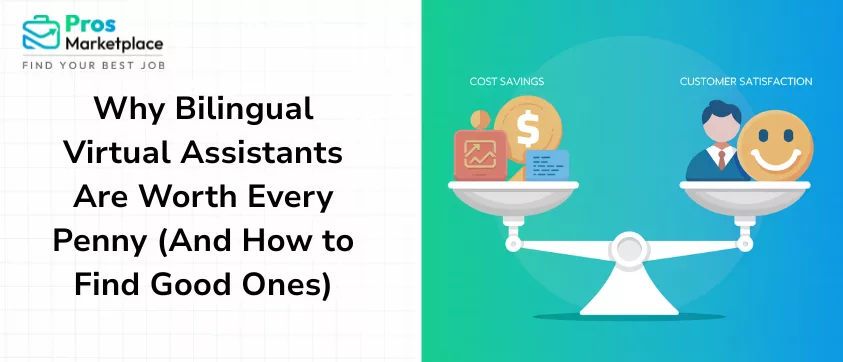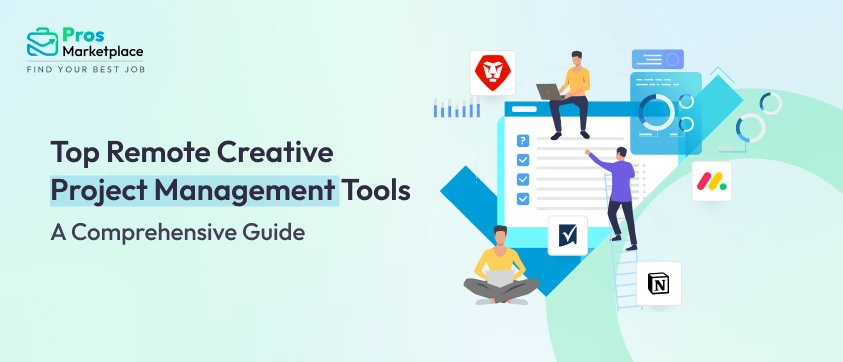Prompt engineering has become a vital skill mainly due to rapid technological advancements, especially with AI models like GPT-4. These innovative AI tools can perform various tasks including writing, answering questions, and even creating aesthetic art. However, the results largely depend on the quality of the prompt provided. Learning what questions to ask to extract the precise information is where understanding prompt engineering meaning becomes vital.
In this blog, we’ll explore prompt engineering’s meaning, types, the art of writing correct prompts, and its pros and cons. You will also find some prompt engineering examples that will help you understand the basics quite well.
What is Prompt Engineering?

Prompt engineering simply means crafting clear, specific questions to help AI generate the required content. The main purpose here is to help AI understand the question’s context.
For instance, if you want to ask about blockchain technology, instead of asking, “What is blockchain technology?” A better example of a prompt might be, “What are the benefits of using blockchain technology in businesses?” The second question gives AI a better understanding of the context in which you’re asking the question.
It is also important to note that the kind of prompt required by different AI models is different because of their design and understanding. For instance, a particular question asked to Copilot might not give you the same response as ChatGPT. Hence, a thorough understanding of these prompt engineering tools is to be done by experimenting and understanding their response pattern and then putting forward your question.
Different Types of Prompt Engineering
To get better at your prompts, it’s beneficial for you to understand the different types of AI prompts. By communicating better with these prompts as mentioned in this prompt engineering guide, you will be able to extract useful information whether factual, creative, or generic.
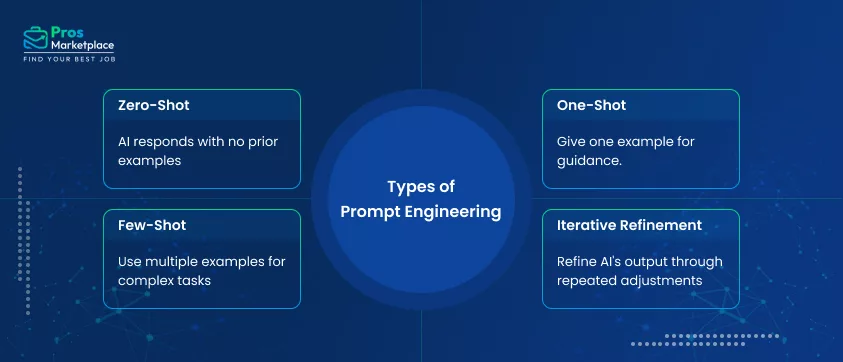
1. Zero-Shot Prompts
Zero-shot prompts require AI to answer any question or perform any task without any prior training on the same. The model is expected to act on its general understanding of the matter to generate an appropriate response. In other words, no prior hint or indication is given to the model.
For instance, you might ask the AI model to translate a particular sentence into Spanish without giving any prior information on the same. The response that will come out of the AI model will be generic and based on its generic understanding of the matter.
2. One-Shot Prompts
In One-shot prompts, you give the AI model a specimen before asking it to generate a response. This helps the model understand the kind of response you are looking for, even if it has never been trained on it before.
For instance, if you want ChatGPT to write a product review, you can give it an example like, this refrigerator is eco-friendly and AI integrated. Then you can ask the model to give a similar review for a microwave.
The AI will copy this format and give you a precise response.
3. Few Shot Prompts
These prompts are useful in scenarios where you want the AI model to understand the patterns and generate more refined content. You can also apply this in cases where the task is outside of AI’s usual scope. This is particularly useful for tasks such as writing industry-specific content or even technical summaries.
For instance, if you want AI to write scientific or even business proposals, you can start by giving it a few samples and then asking it to perform the task.
4. Iterative Refinement Prompts
Iterative Refinement Prompts are helpful when you need to refine the existing response given by the AI model. This can happen one time or even in multiple rounds. Let us understand this with the help of an example of a prompt:
Initiate Prompt: You ask AI to generate a response to a particular question.
Output: The AI model generates a response and you might consider getting improvements on the same.
Refinement: You ask the AI model to refine the content by giving it a few instructions like, checking the accuracy, refining the tone, using active voice, and so on.
Repeat: Once AI has generated the content, you might either find it satisfactory or you can suggest more changes as required.
How to write Better Prompts?
While AI prompts can be written by anyone, being precise and generating to-the-point responses is something that requires skills and experience. You can easily understand the basics of writing better AI prompts by the following:
1. System Prompts Vs Individual Request
Before writing a prompt, it’s better to understand the internal policies that are embedded in the AI model. Some AI models like ChatGPT and DALL-E operate under system prompts that require the user to operate under certain rules.
For instance, if you ask for a sketch of a politician, the AI model might not comply due to the way it has been designed. It is therefore important to be aware of these prompt engineering tools before asking the model to write or generate any content for you.
2. Provide Context
Clearly stating your final objective can help the AI generate more precise content. Instead of stating the intermediary steps, try specifying the final output you want from the AI model.
For instance, instead of writing, how to create a marketing plan?, switch to, I want a marketing plan for a new coffee cafe in the mountains, targeting youngsters and tourists. What key features should I include?
This will give the AI model a better understanding of the context in which you are trying to extract information, thus generating better results.
3. Specific Functionalities
You can ask for specific functionalities, like extracting real-time data, if the AI model has specific functionalities. For instance, you can type, “Based on your web browsing functionality, find me the latest data on the quarterly sales of EVs.”
This will generate a prompt response and will give you quick reliable results.
Pros and Cons of Prompt Engineering
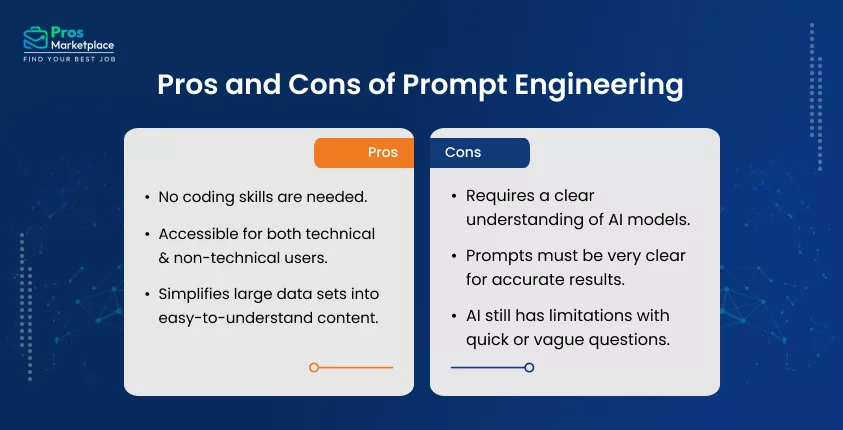
A major advantage of utilizing prompt engineering tools is that innovations in AI and natural language processing have made it easier for users to give prompts to AI models without having the coding skillset. This means anyone, be it technical or non-technical, can give prompts and generate information as and when required. Moreover, this can help many professionals leverage AI to concise large data sets into simple language.
The bad news is, to effectively generate precise responses, you need to have a clear understanding of the AI model you’re dealing with. You need to write your prompts very clearly so that the AI can understand your needs and wants. This is mainly because, even though a lot of advancements have been made in the AI models, they still need some improvements when it comes to understanding quick questions.
Conclusion
As AI continues to evolve, we will be noticing a better understanding of the prompts given by us to these models. But for now, learning prompt engineering is an essential skill for every professional using these AI models. By developing this skill, you can generate better responses, making your day-to-day tasks more efficient and effective.
But as you navigate this process, it is important to note that it’s a process and you will learn as you experiment with different prompts. By continuously refining your approach, you can unlock new possibilities and become a pro at prompt engineering tools.
